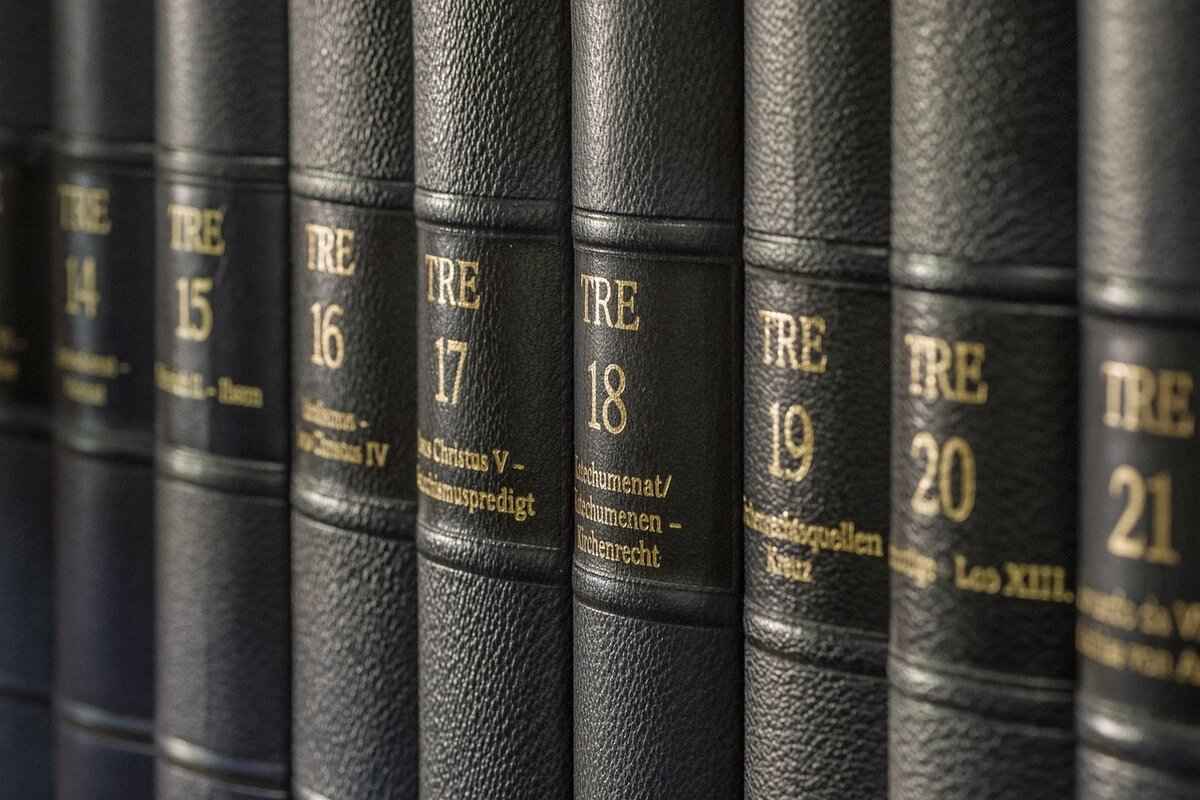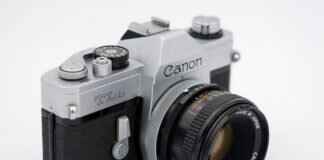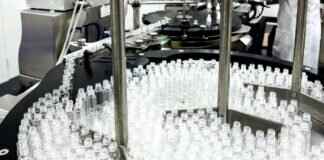This article provides a comprehensive guide on effectively cleaning moldy leather while offering preventive measures to ensure mold does not return, ensuring the longevity and aesthetic appeal of your leather items.
Understanding Mold on Leather
Mold thrives in environments that are moist and poorly ventilated. Leather, being a natural material, can absorb moisture, making it susceptible to mold growth. Understanding the environmental factors that contribute to mold can help you take proactive measures to protect your leather items. Common causes include:
- High humidity levels.
- Poor air circulation.
- Direct contact with wet surfaces.
Recognizing these factors is the first step in preventing mold from forming on your leather goods.
Identifying Mold Types on Leather
Different types of mold can affect leather, and understanding how to identify them is crucial for effective treatment. The most common types include:
- Black Mold: Known for its toxic properties, it can severely damage leather and pose health risks.
- White Mold: Often less harmful but can still lead to discoloration and deterioration.
Being able to identify these molds early can help in taking the necessary steps for cleaning and restoration.
Essential Tools and Materials for Cleaning
Cleaning moldy leather requires specific tools to avoid damage. Essential items include:
- Soft brush: To gently remove surface mold.
- Cleaning solution: A mixture of water and mild soap or specialized leather cleaner.
- Protective gear: Gloves and a mask to protect against mold spores.
Having the right tools on hand will make the cleaning process more effective and safer.
Step-by-Step Cleaning Process for Moldy Leather
Follow these steps to clean moldy leather effectively:
- Preparing the Leather Item: Before starting, ensure the item is in a well-ventilated area. Remove any loose dirt with a soft brush.
- Applying the Cleaning Solution: Dampen a cloth with the cleaning solution and gently wipe the affected areas. Avoid soaking the leather.
- Drying the Leather: Allow the leather to air dry completely in a shaded area. Avoid direct sunlight, which can cause cracking.
Drying and Conditioning Leather After Cleaning
Proper drying and conditioning are critical after cleaning to restore the leather’s quality:
- Natural Drying Techniques: Always let leather dry naturally to maintain its integrity.
- Conditioning Leather: Use a quality leather conditioner to keep it supple and prevent future mold growth.
Preventing Future Mold Growth on Leather
To keep your leather items mold-free, consider these preventive measures:
- Proper Storage Techniques: Store leather in a cool, dry place with good air circulation.
- Regular Maintenance Tips: Clean and condition your leather regularly to keep it in optimal condition.
Implementing these practices will help ensure the longevity of your leather items.
When to Seek Professional Help
If mold persists despite your efforts, it may be time to consider professional cleaning. Signs that indicate professional intervention is needed include:
- Severe mold infestation.
- Persistent odors that do not dissipate.
Choosing a reputable leather cleaner can make a significant difference in restoring your leather items effectively.

Understanding Mold on Leather
Mold is a form of fungus that can thrive in various environments, and leather is no exception. The moisture and poor ventilation often associated with leather items create an ideal breeding ground for mold. Understanding the underlying causes of mold growth is crucial for maintaining the integrity and appearance of leather goods.
One of the primary reasons mold develops on leather is the presence of moisture. Leather, being a natural material, can absorb humidity from the air or come into contact with wet surfaces. This moisture can originate from various sources, including spills, humidity, or improper storage conditions. When leather remains damp for extended periods, it becomes susceptible to mold growth.
Additionally, poor ventilation plays a significant role in mold proliferation. Leather items stored in dark, enclosed spaces without adequate airflow are more likely to develop mold. Such environments trap moisture and create a stagnant atmosphere, which is conducive to fungal growth. Therefore, ensuring proper ventilation is essential in preventing mold from taking hold on leather products.
The impact of mold on leather is multifaceted. Firstly, mold can lead to discoloration, resulting in unsightly stains that can be challenging to remove. These stains not only diminish the aesthetic appeal of leather items but can also affect their resale value. Moreover, mold can weaken the fibers of the leather, compromising its durability and leading to cracks or tears over time.
Furthermore, mold poses health risks, particularly for individuals with allergies or respiratory issues. Inhaling mold spores can lead to various health problems, including asthma attacks, allergic reactions, and other respiratory complications. Thus, addressing mold growth on leather is not just about preserving the material; it is also about safeguarding your health.
In summary, understanding the causes and implications of mold on leather is vital for effective maintenance and prevention. By recognizing the factors that contribute to mold growth, such as moisture and poor ventilation, you can take proactive measures to protect your leather items from damage and ensure their longevity.

Identifying Mold Types on Leather
Identifying different types of mold on leather is crucial for effective treatment and prevention. Mold can significantly damage leather if left untreated, and understanding the specific types can help in taking appropriate action. Below, we explore the most common mold types that affect leather, their characteristics, and how to identify them.
Mold can manifest in various forms on leather, each with its own distinct appearance and implications for the material. Recognizing these types early can prevent extensive damage and maintain the integrity of your leather items.
Black mold, scientifically known as Stachybotrys chartarum, is one of the most notorious types of mold found on leather. It appears as dark green or black patches and is often accompanied by a musty odor. This mold thrives in damp environments and can be particularly harmful to both the leather and human health.
- Health Risks: Exposure to black mold can lead to respiratory issues, headaches, and allergic reactions.
- Identification: Look for dark spots or fuzzy patches that may feel slimy. If you notice an unusual odor, it may also indicate the presence of black mold.
White mold, often caused by Trichoderma species, is less harmful than black mold but can still cause damage to leather. It appears as a white, powdery substance and can sometimes be mistaken for dust or mildew.
- Health Risks: While generally less toxic, it can still cause allergic reactions in sensitive individuals.
- Identification: White mold can be identified by its light, fluffy texture, and it often grows in areas with high humidity.
Green mold, which can be attributed to various fungal species, is another common type found on leather. It usually appears as greenish spots and can develop in similar conditions as black and white mold.
- Health Risks: Green mold can also pose health risks, especially for those with weakened immune systems.
- Identification: Look for green patches that may feel velvety or fuzzy. This type of mold is often found in damp or poorly ventilated spaces.
Yellow mold is less common but can still affect leather items. It often appears as yellowish stains or patches on the surface of the leather.
- Health Risks: While not as harmful as black mold, yellow mold can still cause respiratory issues in some individuals.
- Identification: This mold can be identified by its distinct yellow hue, often with a slimy texture when moisture is present.
Understanding these different types of mold is essential for effective leather care. By identifying the mold type early, you can take appropriate measures to clean and protect your leather items, ensuring their longevity and aesthetic appeal.
Black Mold
Black mold, scientifically known as Stachybotrys chartarum, is infamous for its toxic properties, particularly when it comes to various materials, including leather. Understanding how to recognize black mold is crucial for maintaining the integrity of your leather items and protecting your health.
Black mold typically appears as dark greenish-black patches on leather surfaces. These patches can be fuzzy or slimy in texture, and they often emit a musty odor. The presence of black mold can indicate that the leather has been exposed to excessive moisture, which can lead to significant damage over time.
Exposure to black mold can pose serious health risks. Individuals with respiratory issues, allergies, or compromised immune systems are particularly vulnerable. Common health problems associated with black mold exposure include:
- Respiratory Issues: This can manifest as coughing, wheezing, and difficulty breathing.
- Allergic Reactions: Symptoms may include sneezing, skin rashes, and itchy eyes.
- Long-term Effects: Prolonged exposure can lead to chronic health conditions, including asthma and other lung diseases.
Identifying black mold early can prevent extensive damage to leather items. Here are some visible signs to watch for:
- Dark Spots: Look for small, dark spots that may grow larger over time.
- Foul Odor: A persistent musty smell is a strong indicator of mold presence.
- Texture Changes: The leather may feel sticky or damp to the touch.
Leather is a porous material that can retain moisture, making it an ideal breeding ground for mold. Poor ventilation and high humidity levels further exacerbate the problem. Understanding these conditions is essential for effective prevention and treatment.
If you suspect black mold on your leather items, it’s vital to act quickly:
- Isolate Affected Items: Remove the leather from other belongings to prevent cross-contamination.
- Wear Protective Gear: Use gloves and a mask to protect yourself from mold spores during cleaning.
- Avoid Moisture: Do not use water to clean moldy leather, as this can worsen the situation.
In cases of severe infestation, it may be best to consult a professional leather cleaner. Professionals have access to specialized treatments that can effectively remove mold without damaging the leather.
By understanding how to recognize black mold and its potential health risks, you can take proactive steps to protect both your leather items and your health.
Health Risks Associated with Black Mold
Black mold, scientifically known as Stachybotrys chartarum, is a type of fungus that can pose significant health risks, particularly when it comes into contact with leather materials. This section delves into the various health concerns associated with exposure to black mold, especially in relation to leather items.
When leather becomes damp and is exposed to poor ventilation, it creates an ideal environment for black mold to flourish. As this mold grows, it releases spores and mycotoxins into the air, which can be inhaled or come into contact with skin, leading to a range of health issues.
- Respiratory Problems: Inhalation of black mold spores can trigger a variety of respiratory issues, including asthma attacks, chronic coughs, and bronchitis. Individuals with pre-existing respiratory conditions are particularly vulnerable.
- Allergic Reactions: Exposure to black mold can lead to allergic reactions, characterized by symptoms such as sneezing, runny nose, itchy eyes, and skin rashes. These reactions can vary in severity from mild to severe.
- Weakened Immune System: Prolonged exposure to black mold may compromise the immune system, making individuals more susceptible to infections and illnesses.
- Neurological Symptoms: Some studies suggest that mycotoxins produced by black mold can affect neurological functions, leading to symptoms such as headaches, memory loss, and difficulty concentrating.
Moreover, the presence of black mold on leather can also lead to significant damage to the material itself. The mold can break down the leather fibers, causing discoloration, deterioration, and an unpleasant odor that may be difficult to eliminate.
It is crucial to recognize the signs of black mold on leather items early on. Common indicators include:
- Dark green or black patches on the surface of the leather.
- A musty or damp smell emanating from the leather.
- Visible discoloration or staining on the leather material.
If you suspect that your leather items are affected by black mold, it is essential to take immediate action. Cleaning the affected area with appropriate solutions and ensuring proper ventilation can help mitigate health risks and prevent further mold growth.
In conclusion, understanding the health risks associated with black mold is vital for anyone who owns leather items. By being vigilant and proactive, you can protect your health and preserve the integrity of your leather possessions.
Signs of Black Mold on Leather
Identifying black mold on leather items is crucial for maintaining their quality and longevity. Black mold, known scientifically as *Stachybotrys chartarum*, thrives in damp and poorly ventilated environments. Early detection can prevent extensive damage to your leather goods and safeguard your health. Here are some visible signs to look for when inspecting your leather items for black mold:
- Discoloration: One of the first signs of black mold is a dark, blotchy appearance on the leather surface. This discoloration can range from greenish-black to deep black spots, often appearing fuzzy or slimy.
- Musty Odor: If your leather items emit a strong, musty smell, it may indicate mold growth. This odor is often a result of mold spores and their metabolic byproducts.
- Texture Changes: Mold can alter the texture of leather, making it feel rough, sticky, or slimy. If you notice a change in how the leather feels, it could be a sign of mold infestation.
- Surface Growth: In advanced stages, black mold may appear as fuzzy or filamentous growths on the leather. These growths can be easily spotted and are usually accompanied by a change in color.
- Stains: Black mold can leave behind stains that are difficult to remove. These stains may appear as dark patches that do not wash away easily, indicating deeper mold penetration.
To effectively manage and prevent black mold growth on leather, it is essential to maintain proper humidity levels in storage areas. Keep leather items in well-ventilated spaces and avoid exposing them to moisture. Regularly inspect your leather goods for any signs of mold, especially in humid conditions.
If you do identify black mold, it is crucial to act quickly. Use appropriate cleaning solutions and techniques to remove the mold, and ensure that the leather is dried thoroughly afterward. Conditioning the leather post-cleaning can also help restore its natural oils and prevent future mold growth.
In summary, being vigilant about the signs of black mold on leather can save you from costly damage and health risks. Regular maintenance and proper storage practices are key to keeping your leather items in pristine condition.
White Mold
White mold, while often considered less harmful than its darker counterparts, can still pose significant risks to leather items. Understanding how to identify and manage white mold is crucial for maintaining the integrity and appearance of your leather goods.
- What is White Mold? White mold is a type of fungus that typically appears as a powdery, white substance on surfaces, including leather. It thrives in environments with high humidity and poor ventilation, often found in damp basements or storage areas.
- Why is White Mold a Concern? Although white mold is not as toxic as black mold, it can still lead to discoloration, degradation, and an unpleasant odor in leather. If left untreated, it can weaken the leather fibers, making the material more susceptible to cracks and tears.
Identifying White Mold on Leather
Recognizing white mold early can prevent extensive damage. Look for the following signs:
- Powdery Residue: A fine, white powder or fuzzy growth on the leather surface is often the first indication of white mold.
- Texture Changes: The leather may feel sticky or damp to the touch, indicating moisture accumulation that supports mold growth.
- Odor: A musty smell can accompany the presence of white mold, signaling that the leather is not only contaminated but also potentially harboring other forms of mold.
Implications for Leather Care
The presence of white mold necessitates immediate action to prevent further damage. Here are some key care strategies:
- Immediate Cleaning: As soon as white mold is detected, it is essential to clean the affected area. Use a soft brush to gently remove the mold from the leather surface. Avoid using excessive force, as this can damage the leather.
- Cleaning Solutions: A mixture of water and mild soap or a specialized leather cleaner can be effective in removing white mold. Ensure to test any cleaning solution on a small, inconspicuous area first to avoid discoloration.
- Drying: After cleaning, allow the leather to dry naturally in a well-ventilated area. Avoid direct sunlight or heat sources, as they can cause leather to dry out and crack.
- Conditioning: Once the leather is clean and dry, apply a quality leather conditioner. This helps restore moisture and suppleness, making the leather less prone to future mold growth.
Preventing White Mold Growth
To keep your leather items safe from white mold, consider implementing the following preventive measures:
- Storage Conditions: Store leather items in a cool, dry place with good airflow. Avoid plastic bags, as they trap moisture.
- Regular Maintenance: Regularly clean and condition your leather items to maintain their integrity and prevent mold growth.
- Humidity Control: Use dehumidifiers or silica gel packets in storage areas to reduce humidity levels, creating an unfavorable environment for mold.
By understanding how to spot and address white mold, you can protect your leather items from unnecessary damage. Regular care and preventive measures will ensure your leather remains in excellent condition for years to come.
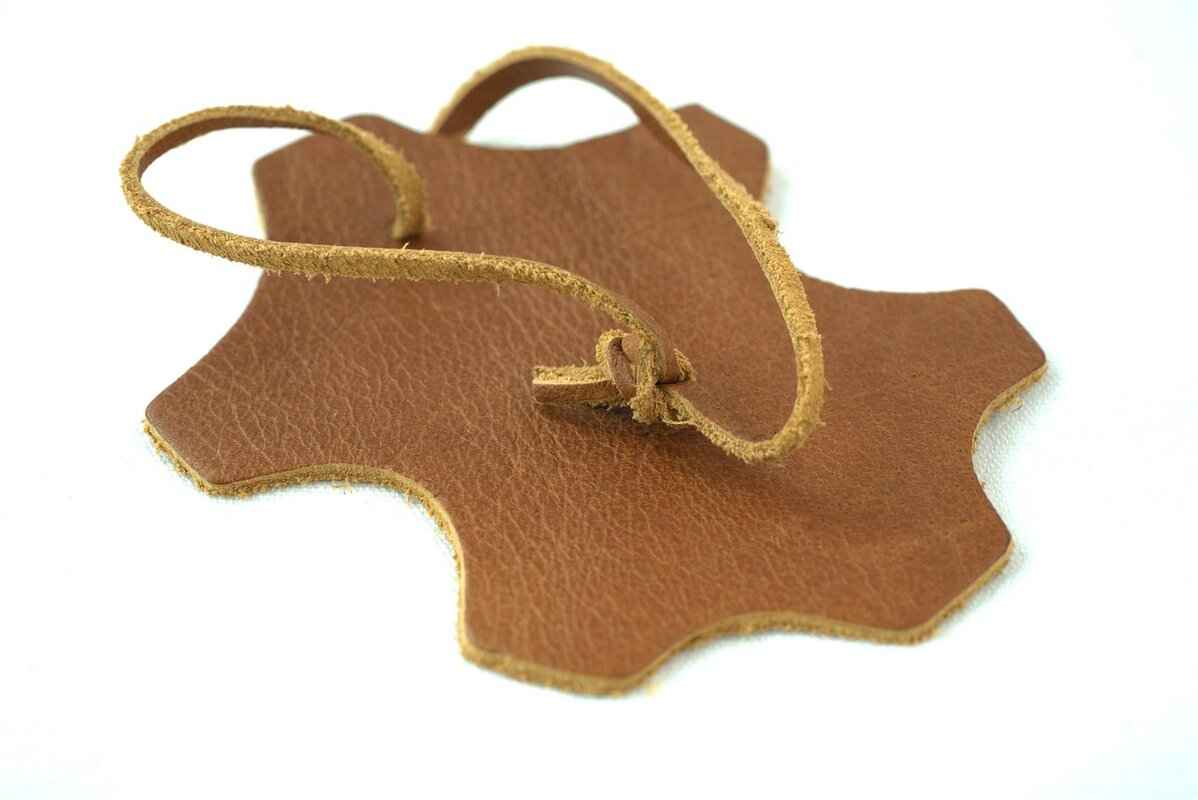
Essential Tools and Materials for Cleaning
Cleaning moldy leather requires specific tools and materials to ensure effective removal without damaging the leather. Here is a detailed overview of the essential items needed for the cleaning process, ensuring you are well-equipped to tackle mold issues.- Soft Brushes: A soft-bristled brush is crucial for gently removing surface mold without scratching or damaging the leather. Look for brushes specifically designed for leather care.
- Cleaning Solutions: Choosing the right cleaning solution is vital. Solutions like white vinegar, rubbing alcohol, or specialized leather cleaners can effectively kill mold spores. Always test a small, inconspicuous area first.
- Microfiber Cloths: These are ideal for applying cleaning solutions and wiping down leather surfaces. They are gentle and won’t leave lint or scratches.
- Protective Gear: When dealing with mold, it’s important to protect yourself. Wear gloves, a mask, and goggles to prevent exposure to mold spores and cleaning chemicals.
- Leather Conditioner: After cleaning, applying a leather conditioner helps restore moisture and suppleness, preventing future mold growth. Look for a conditioner that is free of harsh chemicals.
- Spray Bottle: A spray bottle is useful for applying cleaning solutions evenly across the leather surface. This helps ensure thorough coverage, which is essential for effective mold removal.
- Soft Towels: Use soft towels to dry the leather after cleaning. Avoid using paper towels as they can scratch the surface.
- Ventilation Equipment: Good airflow is important when cleaning moldy leather. Use fans or open windows to improve ventilation and help dry the leather after cleaning.
Having the right tools and materials on hand can significantly enhance your cleaning process, making it more efficient and effective. Each item plays a specific role in ensuring that the leather is cleaned properly while minimizing the risk of damage.
In addition to the tools listed, it’s important to maintain a clean workspace. Ensure that the area where you are cleaning is free from excess moisture and clutter, as this can contribute to mold growth. Regularly inspect your leather items for any signs of mold, and address issues promptly to prevent further damage.
By equipping yourself with these essential tools and materials, you can confidently tackle moldy leather, restoring its beauty and extending its lifespan. Remember, prevention is key, so incorporate regular maintenance and proper storage techniques to keep your leather items mold-free.
Cleaning Solutions
Choosing the right cleaning solution is crucial when it comes to effectively removing mold from leather. Mold can not only damage the aesthetic appeal of your leather items but can also compromise their structural integrity. Therefore, understanding the various cleaning agents available is essential for successful mold removal.
There are several types of cleaning solutions suitable for mold removal on leather, each with its unique properties and effectiveness:
- Vinegar Solution: A mixture of equal parts white vinegar and water can be an effective natural cleaner. Vinegar has antifungal properties that help kill mold spores. To use, simply apply the solution to a soft cloth and gently wipe the affected areas. Make sure to test on a small, inconspicuous area first to ensure no discoloration occurs.
- Rubbing Alcohol: Isopropyl alcohol can be used to tackle stubborn mold. It evaporates quickly and can kill mold without soaking the leather. Mix one part rubbing alcohol with one part water, dampen a cloth, and gently scrub the moldy spots. Ensure the area is well-ventilated during this process.
- Leather Cleaner: Many commercial leather cleaners are specifically formulated to treat mold. Look for products that contain natural ingredients and are free from harsh chemicals. Follow the manufacturer’s instructions for application to ensure the best results.
- Soap and Water: For light mold infestations, a mild soap mixed with water can be effective. Use a gentle, non-abrasive soap and a soft cloth to clean the leather. After cleaning, it’s essential to dry the leather thoroughly to prevent further mold growth.
- Hydrogen Peroxide: This is a powerful disinfectant that can be used for more severe mold cases. Mix hydrogen peroxide with water (1:1 ratio) and apply it to the moldy areas with a soft cloth. Be cautious, as hydrogen peroxide can lighten the color of some leather types, so always test it first.
When selecting a cleaning solution, consider the type of leather you are dealing with. Different leathers may react differently to various cleaning agents. For instance, suede and nubuck leathers require special care, and it is advisable to use products specifically designed for these materials.
In addition to choosing the right cleaning solution, wearing protective gear is essential during the cleaning process. Mold spores can be harmful when inhaled, so using gloves, a mask, and goggles can safeguard your health.
After cleaning, it’s also crucial to condition the leather, as mold removal can strip the material of its natural oils. Use a high-quality leather conditioner to restore moisture and prevent future mold growth. Regular maintenance and proper storage techniques will further enhance the longevity of your leather items.
Protective Gear
When tackling the challenge of cleaning mold from leather, the importance of wearing cannot be overstated. Mold spores can pose significant health risks, making it essential to take the necessary precautions before starting the cleaning process. This section outlines the recommended protective equipment to ensure your safety while effectively removing mold from your leather items.
- Gloves: It is vital to wear durable gloves, preferably made from rubber or nitrile, to protect your hands from direct contact with mold and cleaning solutions. This barrier helps to prevent skin irritation and allergic reactions.
- Mask or Respirator: A mask or respirator is crucial for filtering out airborne mold spores. A mask rated for mold protection, such as an N95 respirator, can significantly reduce inhalation risks, particularly in poorly ventilated areas.
- Goggles: Protecting your eyes from mold spores and cleaning agents is essential. Safety goggles provide a barrier against splashes and airborne particles, ensuring your vision remains clear and free from irritation.
- Protective Clothing: Wearing long sleeves and pants made from breathable materials can help shield your skin from mold exposure and cleaning chemicals. Consider using an old outfit that you don’t mind getting dirty.
- Boots: Closed-toe, waterproof boots can protect your feet from mold and cleaning solutions, especially if you are working in damp areas. Choose footwear that is easy to clean and durable.
In addition to the above gear, it is advisable to work in a well-ventilated space. Open windows and doors to allow fresh air to circulate, which can help disperse mold spores and reduce the concentration of cleaning agents in the air. If possible, consider using a fan to improve airflow further.
Before you begin cleaning, ensure that you have all your protective gear on. This preparation will not only keep you safe but will also enhance your focus on effectively removing mold from your leather items. Remember, taking these precautions is a small price to pay for your health and safety while restoring your leather to its original condition.
By equipping yourself with the proper protective gear, you can confidently tackle mold cleaning tasks, knowing that you are safeguarding your health while preserving the integrity of your leather belongings.
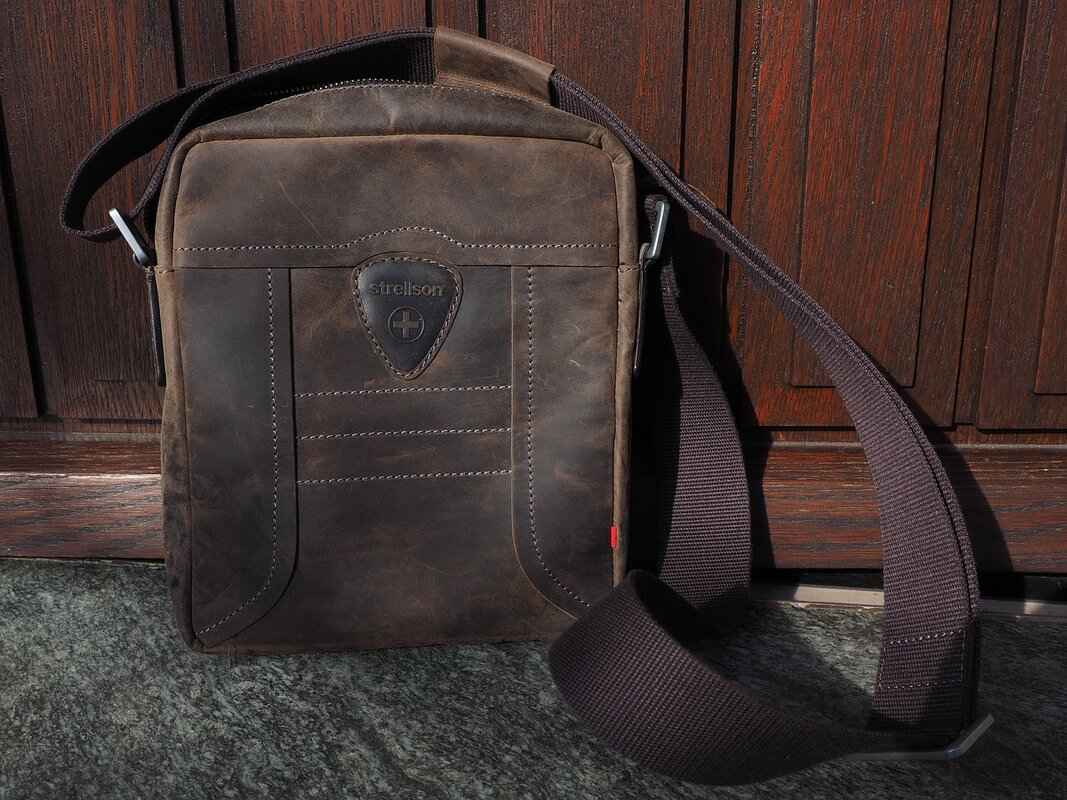
Step-by-Step Cleaning Process for Moldy Leather
Cleaning moldy leather requires a careful and methodical approach to ensure that the mold is effectively removed without causing damage to the material. Below is a detailed guide to help you through the cleaning process.
1. Preparing the Leather ItemBefore diving into the cleaning process, it is crucial to prepare the leather item properly. Start by taking the following steps:
- Assess the Damage: Examine the leather for visible mold growth and assess the extent of the damage. This will help you determine the best cleaning method.
- Choose a Well-Ventilated Area: Select a location that is dry and well-ventilated to prevent mold spores from spreading during cleaning.
- Gather Your Supplies: Ensure you have all necessary cleaning supplies at hand, including a soft brush, cleaning solution, and protective gear.
2. Applying the Cleaning SolutionThe application of the cleaning solution is critical for effective mold removal. Follow these steps:
- Select the Right Cleaning Solution: Choose a cleaning solution specifically designed for leather. Natural options like a mixture of water and white vinegar can be effective.
- Test on a Small Area: Always perform a patch test on an inconspicuous area of the leather to ensure the solution does not damage the material.
- Apply the Solution: Dampen a soft cloth with the cleaning solution and gently wipe the affected areas. Avoid soaking the leather, as excess moisture can lead to further mold growth.
- Scrub Gently: For stubborn mold spots, use a soft brush to scrub gently. Be cautious not to damage the leather’s surface.
3. Rinsing and Drying the LeatherAfter applying the cleaning solution, rinsing and drying are essential steps:
- Wipe with a Clean Cloth: Use a clean, damp cloth to wipe off any remaining cleaning solution from the leather.
- Dry Naturally: Allow the leather to air dry in a well-ventilated area, away from direct sunlight or heat sources, which can cause cracking.
4. Conditioning the LeatherOnce the leather is dry, conditioning is vital to restore its suppleness:
- Choose a Quality Leather Conditioner: Select a conditioner that matches the type of leather you are cleaning.
- Apply the Conditioner: Using a soft cloth, apply the conditioner evenly across the surface of the leather to nourish and protect it.
Following these steps will help ensure that your leather items are cleaned thoroughly and safely, extending their lifespan and maintaining their aesthetic appeal. Remember, regular maintenance and proper storage can significantly reduce the risk of mold growth in the future.
Preparing the Leather Item
Before embarking on the cleaning process for your leather item, it is essential to ensure that you are adequately prepared. Proper preparation not only sets the stage for effective cleaning but also helps in preserving the integrity of the leather. Here, we outline the vital steps you need to take to prepare your leather item for cleaning.
- Assess the Condition of the Leather: Begin by examining your leather item closely. Look for any signs of damage, such as cracks, tears, or discoloration. Understanding the condition of your leather will help you determine the best cleaning approach.
- Identify the Type of Leather: Leather comes in various types, including full-grain, top-grain, and bonded leather. Each type has different cleaning requirements. Knowing the type of leather you are dealing with is crucial for selecting the appropriate cleaning products.
- Gather Necessary Tools and Materials: Before you start cleaning, gather all the necessary tools. This may include:
| Tools/Materials | Purpose |
|---|---|
| Soft brush | To gently remove loose dirt and debris. |
| Microfiber cloth | For applying cleaning solutions and drying the leather. |
| Leather cleaner | To effectively remove mold and dirt without damaging the leather. |
| Conditioner | To restore moisture and prevent future mold growth. |
- Choose the Right Environment: Ensure that you are working in a well-ventilated area. Mold spores can become airborne during cleaning, so it is essential to minimize exposure. Additionally, avoid direct sunlight, which can cause the leather to dry out and crack.
- Wear Protective Gear: When dealing with mold, it is advisable to wear protective gear such as gloves and a mask. This will protect you from inhaling mold spores and coming into contact with cleaning chemicals.
- Test Cleaning Solutions: Before applying any cleaning solution to the entire item, conduct a spot test on a small, inconspicuous area. This will help you verify that the cleaner does not cause discoloration or damage to the leather.
By following these preparatory steps, you ensure that the cleaning process goes smoothly, allowing you to effectively tackle mold while preserving the quality of your leather item. Proper preparation is key to achieving the best results and prolonging the life of your leather goods.
Applying the Cleaning Solution
The application of the cleaning solution is a critical step in the process of removing mold from leather. This step not only determines the effectiveness of mold removal but also ensures that the integrity of the leather is preserved. To achieve the best results, it is essential to follow a systematic approach when applying the cleaning agent.
- Choose the Right Cleaning Solution: Before applying any solution, ensure that it is specifically designed for leather. Avoid harsh chemicals that can damage the material. A mixture of water and mild soap or a specialized leather cleaner is often effective.
- Test on a Small Area: Always conduct a patch test on a less visible area of the leather to ensure that the cleaning solution does not discolor or damage the leather.
- Use Appropriate Tools: Equip yourself with a soft cloth or sponge for application. Avoid using abrasive materials that can scratch the leather surface.
Once you have prepared the cleaning solution and gathered your tools, follow these steps for application:
- Preparation: Ensure the leather item is in a well-ventilated area. This will help in drying and also minimize exposure to mold spores during the cleaning process.
- Application: Dampen the cloth or sponge with the cleaning solution. Gently apply it to the moldy areas using circular motions. Avoid soaking the leather, as excessive moisture can lead to further mold growth.
- Wipe Away Residue: After applying the cleaning solution, use a clean, dry cloth to wipe away any excess moisture and solution. This step is crucial to prevent any residue that could attract more mold.
- Repeat as Necessary: For stubborn mold, you may need to repeat the application process. Be patient and allow the leather to dry thoroughly between applications.
After the cleaning solution has been applied and the mold removed, it is essential to follow up with proper drying and conditioning. This will help restore the leather’s natural oils and prevent future mold growth.
By adhering to these steps, you can effectively apply the cleaning solution, ensuring that your leather items are not only free from mold but also well-maintained for future use.

Drying and Conditioning Leather After Cleaning
After the cleaning process, it is crucial to focus on drying and conditioning leather to restore its original quality and prevent future damage. Leather is a natural material that requires special care, and improper drying or conditioning can lead to cracks, stiffness, or even mold growth.
When it comes to drying leather, natural drying techniques are the most effective and safest. Here are some key steps to follow:
- Avoid Direct Heat Sources: Never use hair dryers, radiators, or direct sunlight to dry leather. These can cause the leather to dry out too quickly, leading to cracks.
- Air Drying: Place the leather item in a well-ventilated area away from direct sunlight. This allows the moisture to evaporate slowly and evenly.
- Use Absorbent Materials: If the leather is excessively wet, use a clean, dry cloth to gently blot the surface. Avoid rubbing, as this can damage the leather.
Once the leather is dry, the next step is conditioning. Conditioning helps to restore the natural oils that may have been stripped away during the cleaning process. Here are some important points to consider:
- Choose the Right Conditioner: Select a high-quality leather conditioner that is appropriate for your specific type of leather. Look for products that contain natural oils and waxes.
- Test Before Application: Always perform a patch test on a small, inconspicuous area to ensure compatibility with the leather.
- Apply Evenly: Use a soft cloth or sponge to apply the conditioner evenly across the leather surface. Work in small sections to ensure thorough coverage.
To maintain the leather’s quality, it is recommended to condition it every 3 to 6 months, depending on usage and environmental conditions. Regular conditioning not only enhances the appearance but also creates a protective barrier against moisture and mold.
Be observant of your leather items. If you notice dryness, fading, or stiffness, these are clear indicators that your leather requires conditioning. Addressing these signs promptly can help prolong the life of your leather goods.
In summary, proper drying and conditioning are vital steps in maintaining the integrity and appearance of leather after cleaning. By following the best practices outlined above, you can ensure that your leather items remain in excellent condition for years to come.
Natural Drying Techniques
When it comes to caring for leather, are essential for maintaining its quality and longevity. This section delves into effective methods for drying leather without causing damage, ensuring that your leather items remain in pristine condition.
Leather is a natural material that can be sensitive to moisture. If leather becomes wet, whether from cleaning, spills, or environmental factors, it is crucial to dry it properly. Improper drying can lead to issues such as cracking, stiffness, and mold growth. Thus, understanding the best practices for drying leather is vital.
Natural drying methods are preferred over artificial heat sources because they help preserve the leather’s integrity. High temperatures can cause leather to dry out too quickly, leading to brittleness. Instead, natural drying allows for a gradual evaporation of moisture, which is gentler on the material.
- Air Drying: This is the most common natural drying method. Simply place the leather item in a well-ventilated area, away from direct sunlight and heat sources. Ensure that air can circulate around the item to facilitate even drying.
- Using Absorbent Materials: If the leather is excessively wet, consider using absorbent materials like towels or cloths. Gently blot the surface to soak up excess moisture, but avoid rubbing, which can damage the leather.
- Drying on a Flat Surface: For items like leather shoes or bags, lay them flat on a clean, dry surface. This prevents any distortion of shape that can occur if they are hung or placed in an awkward position.
- Using a Fan: If the air circulation is poor, a fan can be a helpful tool. Position it at a safe distance to avoid direct airflow on the leather, which could cause uneven drying.
- Avoid Direct Heat: Never use hair dryers, radiators, or other heat sources to dry leather. This can lead to irreversible damage.
- Do Not Hang Wet Leather: Hanging wet leather can cause it to stretch and lose its shape. Always lay it flat or store it in its original shape.
- Steer Clear of Sunlight: Direct sunlight can fade color and dry out leather too quickly. Opt for shaded, well-ventilated areas instead.
Once your leather item is dry, it is essential to condition it to restore moisture and flexibility. Use a high-quality leather conditioner to prevent it from becoming stiff or cracked. Apply the conditioner evenly and allow it to absorb fully before using the item again.
In summary, using is crucial for maintaining the quality of leather. By following the outlined methods and avoiding common pitfalls, you can effectively dry your leather items without causing damage, ensuring they remain beautiful and functional for years to come.
Conditioning Leather to Prevent Future Mold
Conditioning leather is an essential practice that not only enhances its appearance but also plays a crucial role in preventing mold growth. Leather, being a natural material, can absorb moisture from the environment, which creates a conducive atmosphere for mold and mildew. Therefore, regular conditioning not only maintains the leather’s suppleness but also acts as a barrier against moisture, thus reducing the risk of mold. In this section, we will delve into the best conditioning products and techniques for effective leather maintenance.
Conditioning helps to restore the natural oils in leather that may have been lost due to exposure to air, heat, and moisture. Without proper conditioning, leather can become dry and brittle, leading to cracks and damage. Furthermore, moisture accumulation can lead to mold growth, which can severely affect the integrity and appearance of leather items. By regularly conditioning leather, you ensure its longevity and aesthetic appeal.
When it comes to selecting conditioning products, it is essential to choose those specifically designed for leather. Look for products that contain natural oils such as neatsfoot oil, coconut oil, or beeswax. These ingredients help to nourish the leather and create a protective layer against moisture. Avoid products with silicone or petroleum-based ingredients, as they can damage the leather over time.
- Clean the Leather First: Before applying any conditioner, ensure that the leather is clean and dry. Use a soft cloth or a leather cleaner to remove dirt and grime.
- Test on a Small Area: Always perform a patch test on a small, inconspicuous area to ensure the conditioner does not alter the leather’s color or texture.
- Apply Evenly: Use a soft cloth or sponge to apply the conditioner evenly across the surface. Work in small sections to ensure thorough coverage.
- Allow to Absorb: Let the conditioner sit for a few minutes to allow it to penetrate the leather. This step is crucial for effective moisture retention.
- Buff the Surface: After the conditioner has absorbed, use a clean, dry cloth to buff the leather, enhancing its shine and softness.
The frequency of conditioning will depend on the environment and usage of the leather item. As a general rule, it is advisable to condition leather every 3 to 6 months. However, if the leather is exposed to harsh conditions, such as high humidity or frequent use, more frequent conditioning may be necessary. Pay attention to the leather’s texture and appearance; if it looks dry or feels rough, it’s time to apply conditioner.
Conditioning leather not only prevents it from drying out but also creates a barrier against moisture that can lead to mold growth. When leather is well-conditioned, it becomes less porous, reducing the chances of mold spores settling and thriving. Additionally, ensure that your leather items are stored in a cool, dry place with adequate ventilation to further minimize moisture accumulation. Regularly inspecting your leather items for signs of mold and addressing any issues promptly will also help maintain their condition.
In conclusion, conditioning leather is an indispensable part of leather care that helps prevent mold growth and ensures the longevity of your leather items. By selecting the right products and employing effective application techniques, you can maintain the beauty and integrity of your leather, keeping it mold-free and looking its best.
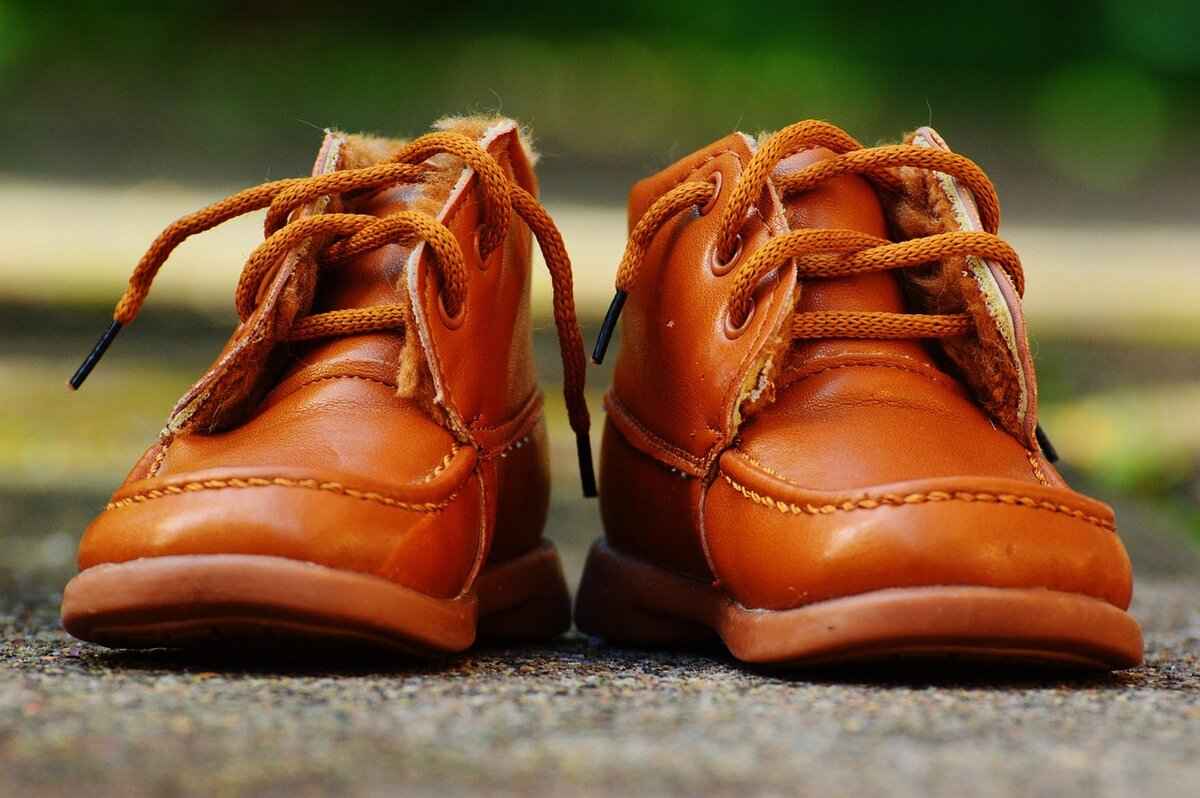
Preventing Future Mold Growth on Leather
Preventing mold growth on leather items is essential for maintaining their beauty and longevity. Mold thrives in environments that are damp and poorly ventilated, making it crucial to implement effective strategies that mitigate these conditions. This section will provide you with a variety of practical tips and techniques to keep your leather items mold-free.
Proper Storage Techniques
- Choose the Right Environment: Store leather items in a cool, dry place. Ideal humidity levels should be between 30% and 50%. Avoid basements or attics where moisture levels can fluctuate.
- Use Breathable Covers: When storing leather, opt for cotton or linen covers rather than plastic. This allows air circulation while protecting against dust and dirt.
- Maintain Space: Ensure that leather items are not crammed together. Allowing space between items enhances airflow, reducing the chance of moisture accumulation.
Regular Maintenance Tips
Regular maintenance is vital in preventing mold growth on leather. By adopting a consistent cleaning and conditioning routine, you can significantly reduce the risk of mold.
- Clean Regularly: Dust and clean leather items with a soft, dry cloth weekly. This prevents dirt and moisture buildup, which can encourage mold growth.
- Condition Leather: Use a high-quality leather conditioner every 3-6 months. Conditioning helps maintain the leather’s natural oils, preventing it from drying out and becoming vulnerable to mold.
- Inspect for Damage: Regularly check your leather items for signs of wear or damage. Addressing small issues promptly can prevent larger problems, including mold infestations.
Utilize Dehumidifiers and Air Purifiers
In areas prone to high humidity, consider using dehumidifiers and air purifiers. Dehumidifiers help maintain optimal humidity levels, while air purifiers can eliminate mold spores in the air.
- Dehumidifiers: Invest in a dehumidifier for rooms where leather items are stored. This device removes excess moisture from the air, creating a less hospitable environment for mold.
- Air Purifiers: Using an air purifier with a HEPA filter can help trap mold spores and other allergens, improving the overall air quality in your home.
Monitor Temperature
Temperature plays a significant role in mold growth. Keeping your leather items in a stable, moderate temperature can help prevent mold.
- Avoid Extreme Temperatures: Leather should be kept away from direct sunlight, heat sources, and extreme cold. Rapid temperature changes can lead to condensation, creating a breeding ground for mold.
- Use Climate Control: If possible, maintain a consistent temperature in the storage area. Air conditioning can help regulate both temperature and humidity levels.
By implementing these strategies, you can effectively prevent mold growth on your leather items, ensuring they remain in excellent condition for years to come. Regular maintenance, proper storage, and environmental control are the keys to keeping your leather mold-free.
Proper Storage Techniques
Storing leather correctly is essential for preventing mold growth and maintaining the integrity of your leather items. Leather is a natural material, and when exposed to moisture and inadequate air circulation, it becomes susceptible to mold and mildew. Below are some effective storage techniques that can help keep your leather items safe and in excellent condition.
- Choose the Right Environment: Store leather items in a cool, dry place with stable temperatures. Extreme heat or cold can damage the leather, while high humidity levels can promote mold growth.
- Avoid Plastic Bags: While it may be tempting to store leather in plastic to protect it, this can trap moisture. Instead, use breathable cotton or linen dust bags that allow airflow.
- Use Acid-Free Tissue Paper: When storing leather goods, especially bags or shoes, stuffing them with acid-free tissue paper can help maintain their shape and absorb any excess moisture.
- Keep Away from Direct Sunlight: Prolonged exposure to sunlight can fade and dry out leather. Store items in a shaded area, away from windows.
- Maintain Air Circulation: Ensure that the storage area is well-ventilated. This can be achieved by not overcrowding items and allowing space between them for air to circulate.
- Regularly Check Stored Items: Periodically inspect your leather items for signs of mold or mildew. If you notice any issues, address them immediately to prevent further damage.
Temperature and Humidity ControlMaintaining an optimal environment is crucial for leather storage. Ideally, the temperature should be between 60°F and 75°F (15°C to 24°C), with humidity levels around 40% to 50%. Using a hygrometer can help monitor these conditions. If your storage area is prone to high humidity, consider using a dehumidifier to keep moisture levels in check.
Storing Leather FurnitureFor larger leather items like sofas and chairs, it’s important to use protective covers made from breathable materials. Avoid placing heavy objects on leather furniture, as this can cause permanent indentations. Additionally, rotating cushions regularly can help distribute wear evenly.
Seasonal Storage TipsIf you’re storing leather items for an extended period, such as winter coats or summer bags, consider applying a leather conditioner before storage. This helps to keep the leather moisturized and prevents it from drying out. Always ensure that items are clean before storing them, as dirt and oils can cause damage over time.
ConclusionBy following these proper storage techniques, you can significantly reduce the risk of mold growth and prolong the life of your leather items. Taking the time to store leather correctly not only protects your investment but also ensures that your leather goods remain beautiful and functional for years to come.
Regular Maintenance Tips
are essential for preserving the quality and longevity of leather items while preventing mold growth. Leather, being a natural material, requires consistent care to maintain its appearance and functionality. Here are some effective maintenance tips to ensure your leather stays in optimal condition.
- Keep Leather Dry: Moisture is a primary catalyst for mold growth. Always ensure that your leather items are kept in a dry environment. Avoid storing them in damp areas, and use moisture-absorbing products like silica gel packs in storage spaces.
- Clean Regularly: Regular cleaning helps remove dirt and oils that can attract mold. Use a soft, dry cloth to wipe down leather surfaces periodically. For deeper cleaning, consider using a leather cleaner specifically formulated for your type of leather.
- Condition Your Leather: Conditioning is crucial as it helps maintain the suppleness of the leather and prevents it from drying out and cracking. Apply a high-quality leather conditioner every 3-6 months, depending on usage and environmental conditions.
- Avoid Direct Sunlight: Prolonged exposure to sunlight can cause leather to fade and dry out, increasing the risk of mold growth. Store leather items in a shaded area or use protective covers when they are not in use.
- Use Protective Sprays: Consider applying a leather protector spray that is designed to repel water and prevent stains. This adds an extra layer of protection against moisture that can lead to mold.
- Inspect for Damage: Regularly check your leather items for signs of wear and tear. Addressing small issues promptly can prevent them from becoming larger problems, including mold growth.
- Proper Storage: When not in use, store leather items in breathable bags or boxes. Avoid plastic, as it traps moisture. Ensure that items are not overcrowded to allow for proper air circulation.
By implementing these , you can significantly reduce the chances of mold growth on your leather items. Consistent care not only enhances the aesthetic appeal of leather but also ensures its durability over time. Remember, taking proactive steps in leather maintenance is key to preserving its beauty and functionality.

When to Seek Professional Help
In certain situations, dealing with moldy leather can be a daunting task, especially when the infestation is severe. While many homeowners might attempt to tackle the problem themselves, there are instances when hiring a professional cleaning service is not just beneficial but necessary. This section will explore the signs indicating that it may be time to seek expert assistance for moldy leather items.
- Severe Mold Infestation: If you notice extensive mold growth that covers a large area of your leather item, it is a clear sign that professional help is needed. Small patches can often be handled at home, but widespread mold can penetrate deeper into the material, making it difficult to remove without specialized equipment and expertise.
- Persistent Odor: A strong, musty smell emanating from your leather goods can indicate that mold is not only present on the surface but has also infiltrated the material. If cleaning attempts do not eliminate the odor, it is advisable to consult a professional who can thoroughly assess and treat the item.
- Health Concerns: If you or anyone in your household experiences allergic reactions or respiratory issues when handling moldy leather, it is crucial to seek professional help. Mold can release spores that are harmful to health, and a professional cleaner will have the necessary protective gear and knowledge to handle the situation safely.
- Valuable or Sentimental Items: If the leather item is particularly valuable, whether financially or sentimentally, it is wise to consult a professional. Experts can provide specialized treatments that preserve the integrity of the leather while effectively removing mold.
- Uncertainty About Cleaning Methods: If you are unsure about the appropriate cleaning methods or products to use on your leather, it’s best to leave it to the professionals. Using the wrong cleaning agents can cause irreparable damage to the leather, leading to discoloration or deterioration.
Choosing a Professional Leather Cleaner
When it comes to selecting a professional leather cleaning service, it’s essential to do your research to ensure you are making the right choice. Here are some tips to help you find a reputable cleaner:
- Check Reviews and Testimonials: Look for online reviews and testimonials from previous customers. A reputable cleaner will have positive feedback that highlights their effectiveness and professionalism.
- Ask About Experience: Inquire about the cleaner’s experience with mold removal specifically. A service that specializes in leather care will be better equipped to handle mold infestations effectively.
- Request a Consultation: Many professional cleaners offer consultations to assess the damage and provide a quote. Use this opportunity to ask questions about their cleaning methods and products.
- Verify Credentials: Ensure that the cleaning service is certified and insured. This protects you in case of accidental damage during the cleaning process.
- Discuss Cleaning Methods: Ask about the cleaning methods and products they use. Ensure they are safe for leather and effective against mold.
In summary, recognizing when to seek professional help for moldy leather is crucial for preserving your items and ensuring your health. By understanding the signs that indicate the need for expert intervention and knowing how to choose a qualified professional, you can effectively manage mold issues and maintain the quality of your leather goods.
Signs You Need Professional Cleaning
When it comes to maintaining the integrity and appearance of your leather items, recognizing when to seek professional cleaning is crucial. Mold infestations can escalate quickly, leading to irreversible damage if not addressed promptly. This section will explore the key indicators that suggest it’s time to consult an expert.
- Visible Mold Growth: If you notice mold spots on your leather, especially if they are black or fuzzy, this is a clear sign that professional intervention is needed. Mold can penetrate the leather fibers, making it difficult to remove without specialized cleaning techniques.
- Persistent Odor: A musty smell emanating from your leather items is another indicator of mold presence. If the odor persists even after cleaning attempts, it may be time to seek professional help to ensure complete removal of mold spores.
- Stains and Discoloration: If your leather has developed stains or discoloration due to mold, it can be challenging to restore its original color and finish. Professionals have access to advanced cleaning solutions and techniques that can effectively address these issues.
- Health Concerns: If you or anyone in your household experiences respiratory issues, allergies, or skin irritation when around the moldy leather, it’s essential to seek professional cleaning. Mold can pose health risks, and addressing it promptly can help safeguard your well-being.
- Extensive Damage: If the mold has caused significant damage, such as cracking, peeling, or weakening of the leather, professional restoration services may be necessary. Experts can assess the damage and provide the best course of action for repair.
- Unsuccessful DIY Attempts: If you’ve tried cleaning the leather yourself but have seen little to no improvement, it may be time to call in the professionals. DIY methods can sometimes exacerbate the problem, making it more challenging to restore the leather.
Recognizing these signs early can save your leather from severe damage and costly repairs. Professional cleaners not only have the expertise to handle mold but also the right tools and cleaning solutions to ensure your leather is treated without further harm. If you find yourself facing any of these indicators, don’t hesitate to reach out for professional assistance.
Choosing a Professional Leather Cleaner
Finding the right professional cleaner is crucial for effective mold removal from leather items. Mold can cause significant damage not only to the appearance of leather but also to its structural integrity. Selecting a reputable cleaning service can ensure that your leather is treated with care and expertise. Here are some essential tips to help you choose the right professional leather cleaner.
- Research and Reviews: Start by researching local leather cleaning services. Look for companies with strong customer reviews and ratings. Websites like Yelp, Google Reviews, and even social media platforms can provide insights into the experiences of previous clients. Pay attention to feedback regarding mold removal specifically, as this will give you a clear picture of their expertise in this area.
- Experience and Expertise: Choose a cleaning service that has extensive experience in handling leather. Inquire about their training and qualifications. A professional cleaner should have knowledge of different leather types and the appropriate cleaning methods for each. Ask if they have dealt with mold issues before and how they approach such situations.
- Cleaning Methods: It’s important to understand the cleaning methods used by the service. Inquire whether they use eco-friendly products, as harsh chemicals can damage leather. A reputable cleaner should be able to explain their cleaning process and the products they use, ensuring they are safe for your leather items.
- Insurance and Guarantees: Check if the cleaning service is insured. This protects you in case of any accidental damage during the cleaning process. Additionally, a reliable cleaner will often provide a satisfaction guarantee, ensuring that they will address any issues that may arise post-cleaning.
- Cost Estimates: Obtain quotes from multiple cleaning services. While price shouldn’t be the only factor, it is essential to understand the cost involved. Be cautious of services that offer significantly lower prices, as this may indicate a lack of experience or the use of inferior cleaning methods.
- Customer Service: Evaluate the customer service of the cleaning company. A professional cleaner should be responsive, willing to answer your questions, and provide clear communication throughout the process. Good customer service reflects the overall professionalism of the company.
- Follow-Up Services: Inquire if the cleaner offers follow-up services or advice on maintaining leather after cleaning. This can be beneficial in preventing future mold growth and ensuring the longevity of your leather items.
By taking these factors into consideration, you can confidently choose a professional leather cleaner who will effectively address mold issues while preserving the quality and appearance of your leather goods. Remember, investing in a reputable service not only safeguards your items but also provides peace of mind knowing that they are in capable hands.
Frequently Asked Questions
- How can I tell if my leather has mold?
If you notice any discoloration, fuzzy spots, or a musty smell, your leather may have mold. It’s essential to inspect your items regularly, especially in humid environments.
- Can I use regular household cleaners on moldy leather?
It’s not recommended to use regular household cleaners as they can damage the leather. Instead, opt for specialized leather cleaning solutions that effectively remove mold without harming the material.
- What should I do if the mold keeps coming back?
If mold reappears, it may indicate a persistent moisture problem or improper storage. Ensure your leather is stored in a cool, dry place and consider using silica gel packs to absorb excess humidity.
- Is black mold on leather dangerous?
Yes, black mold can be harmful and may cause respiratory issues or allergic reactions. If you suspect black mold, it’s crucial to handle the cleaning process carefully or seek professional help.
- How often should I condition my leather to prevent mold?
Conditioning your leather every 3-6 months can help maintain its suppleness and prevent mold growth. Regular maintenance is key to keeping your leather in top shape.

